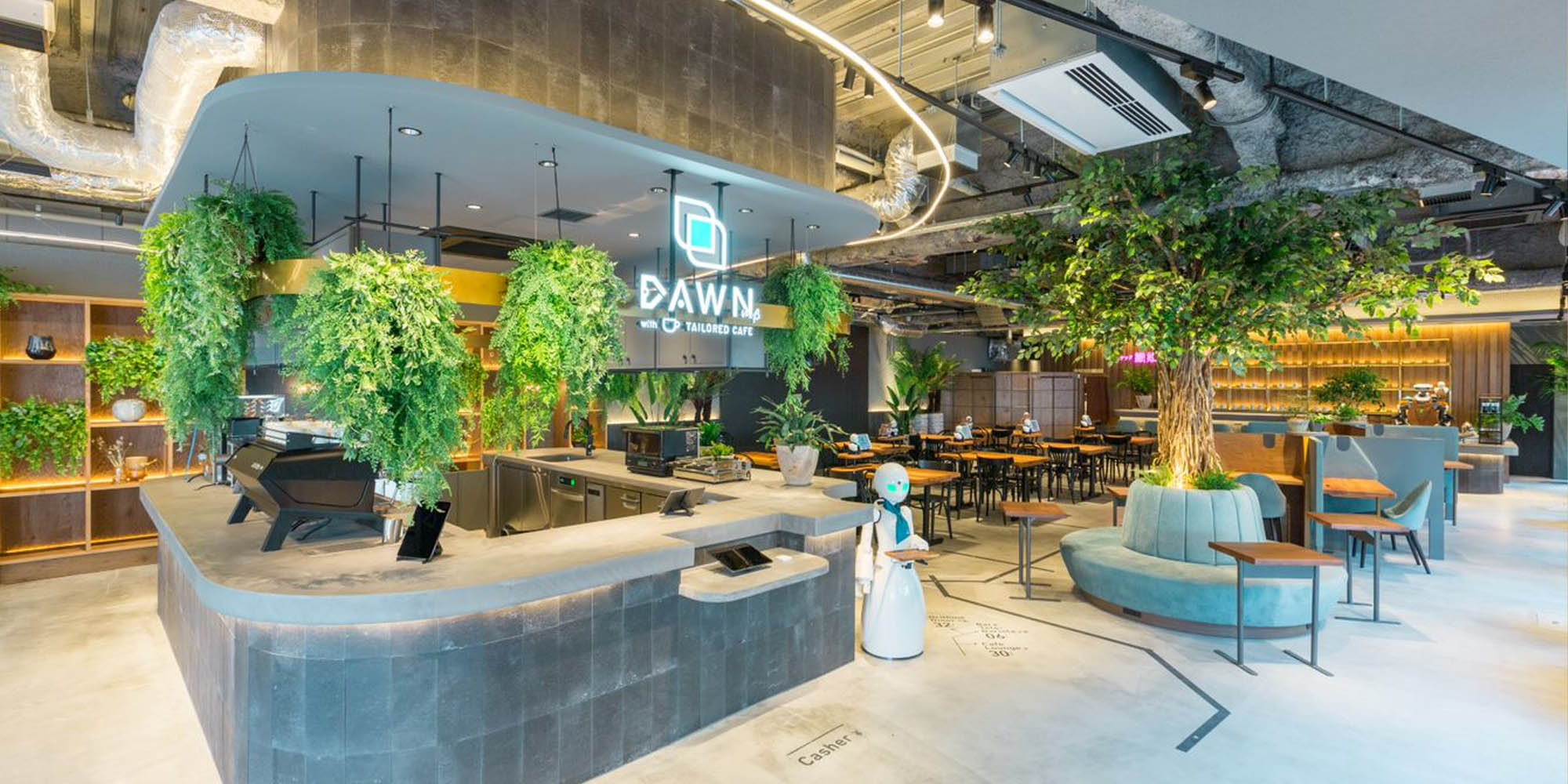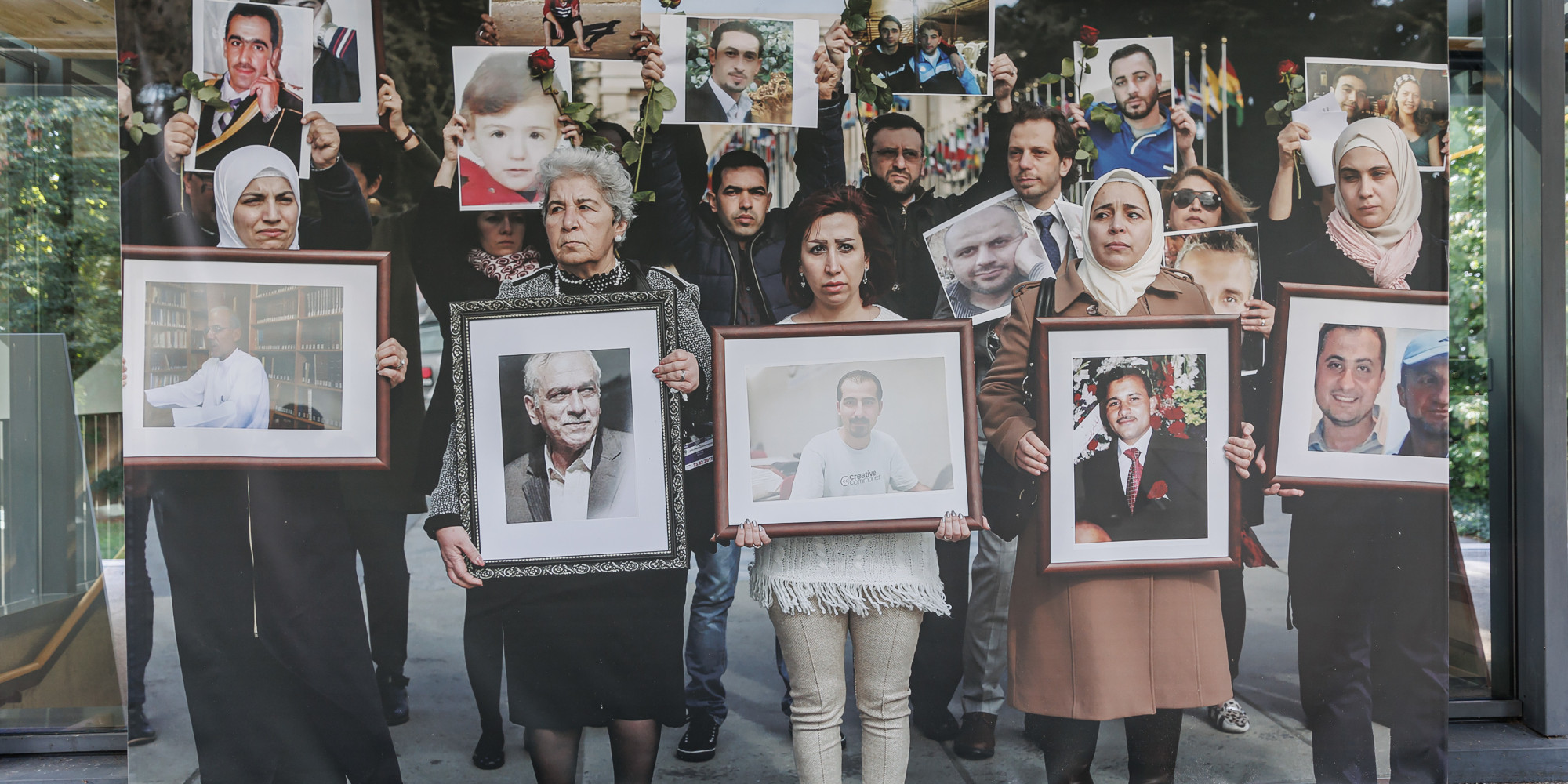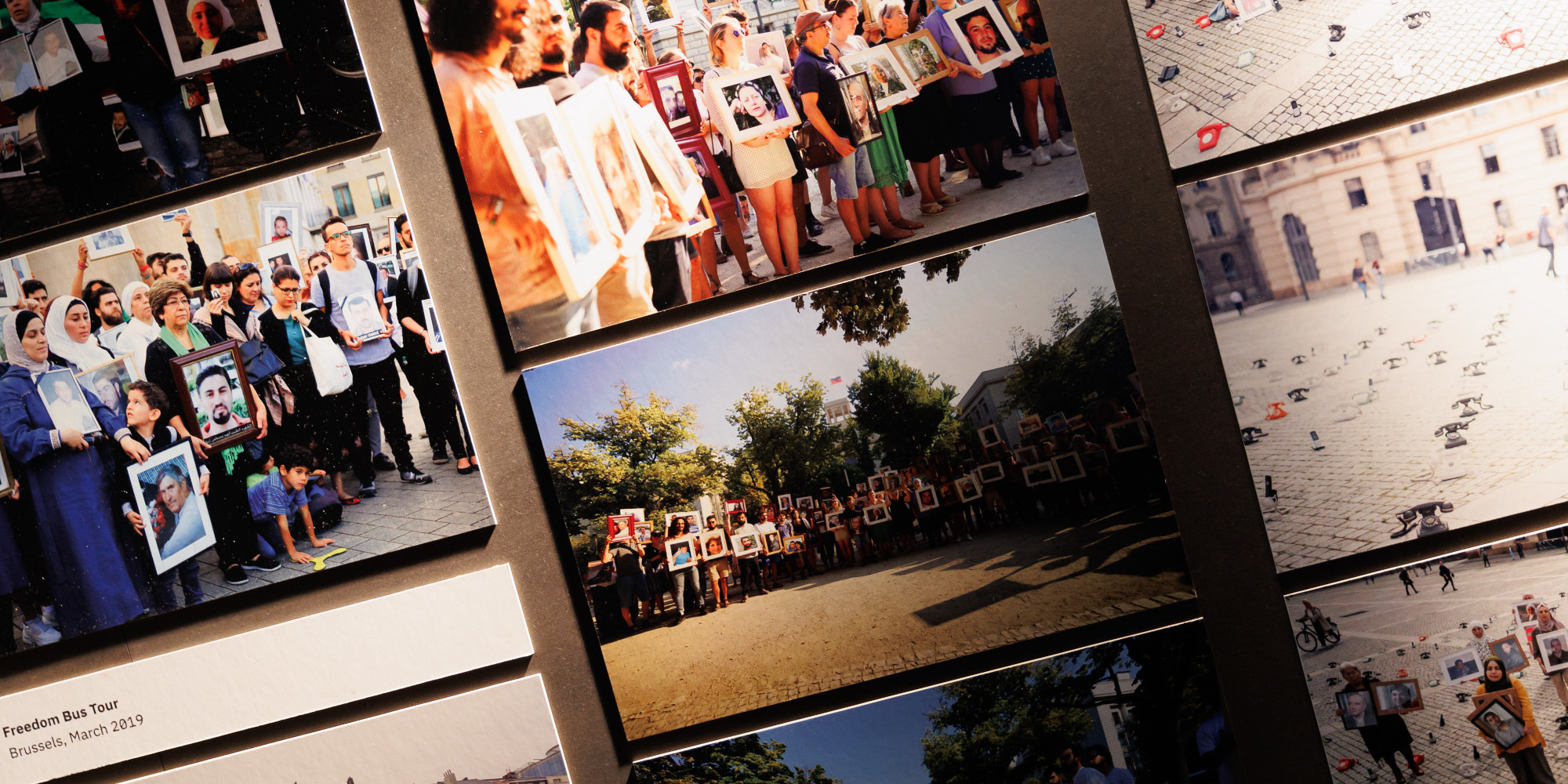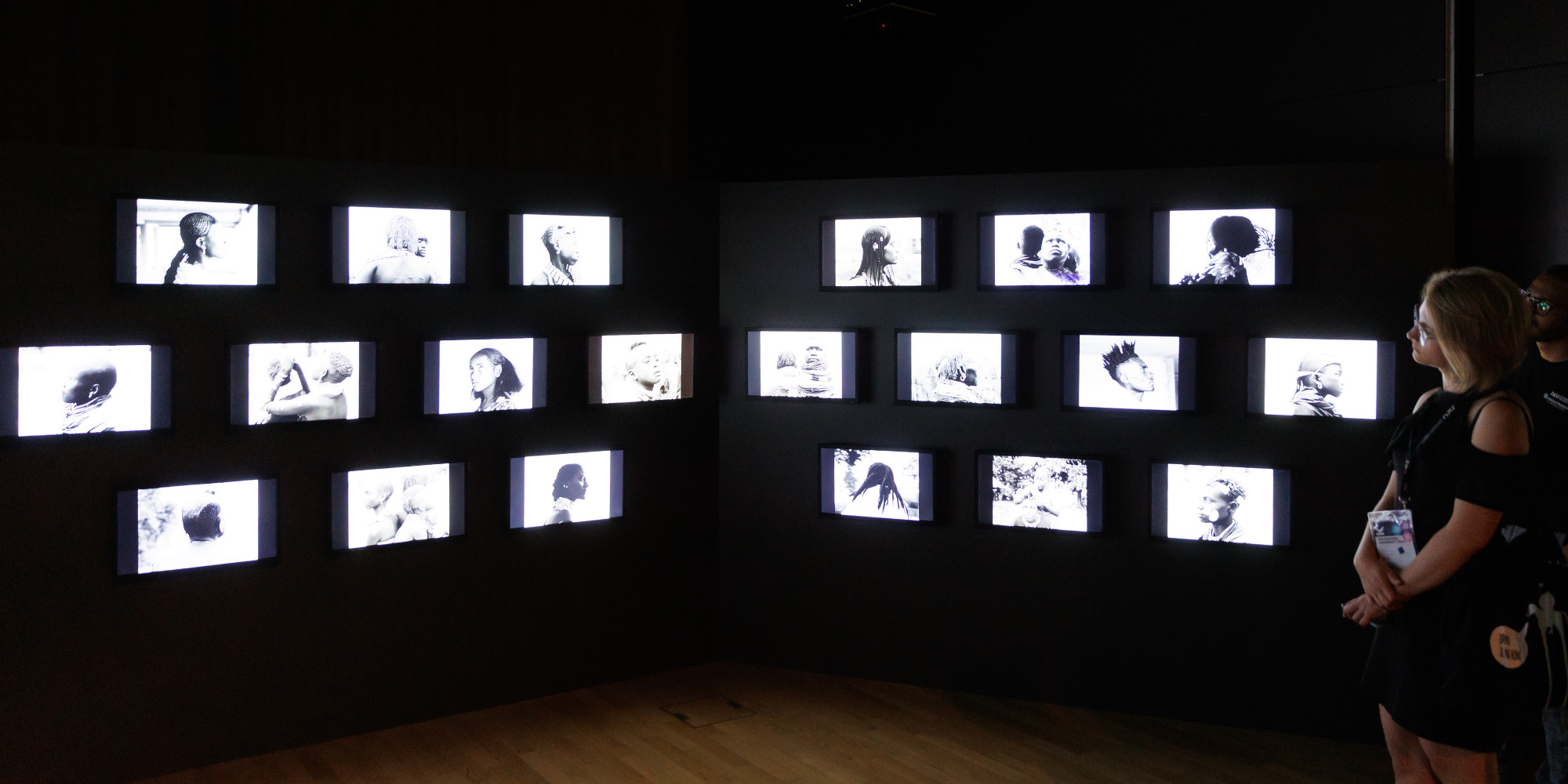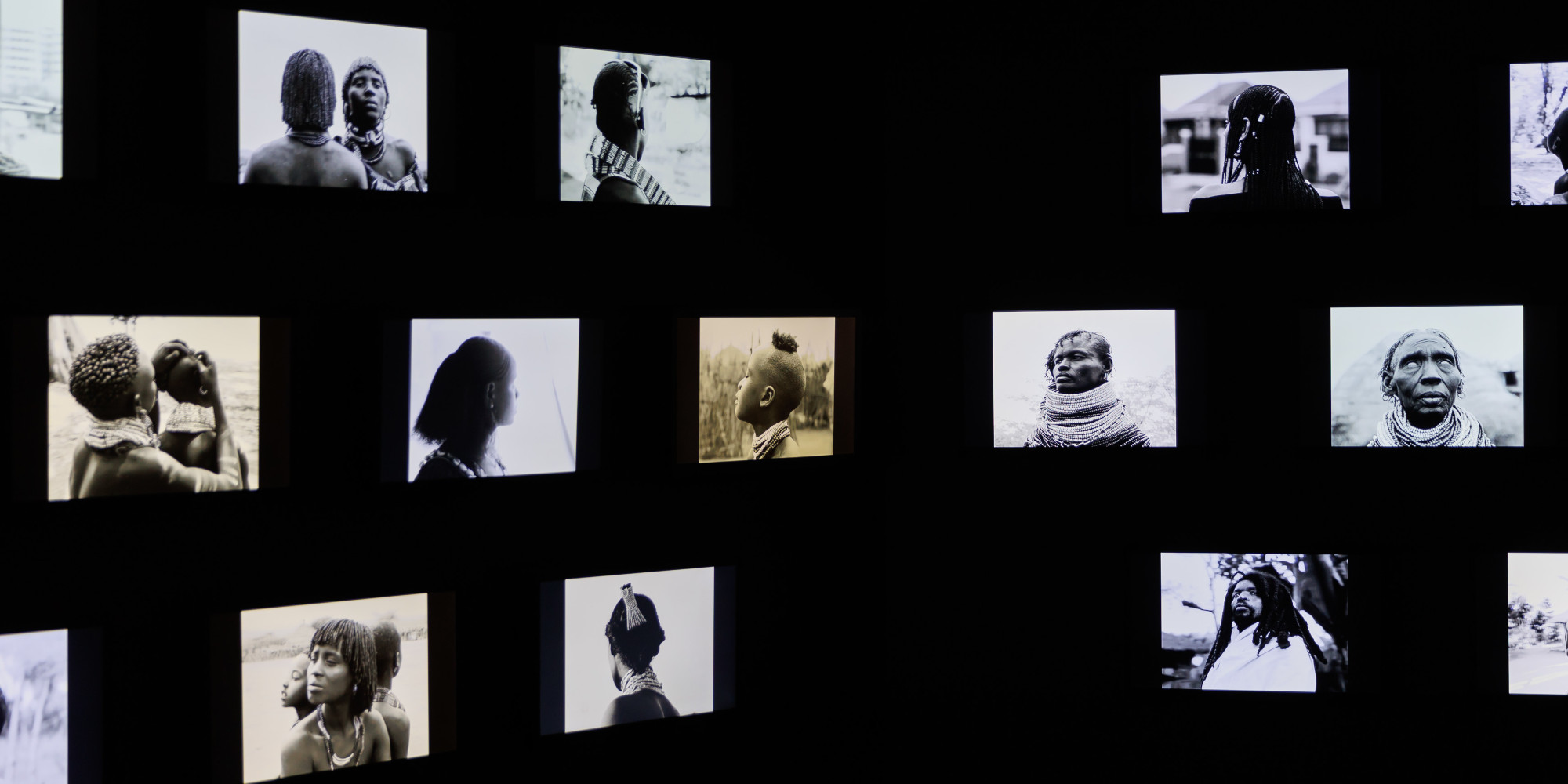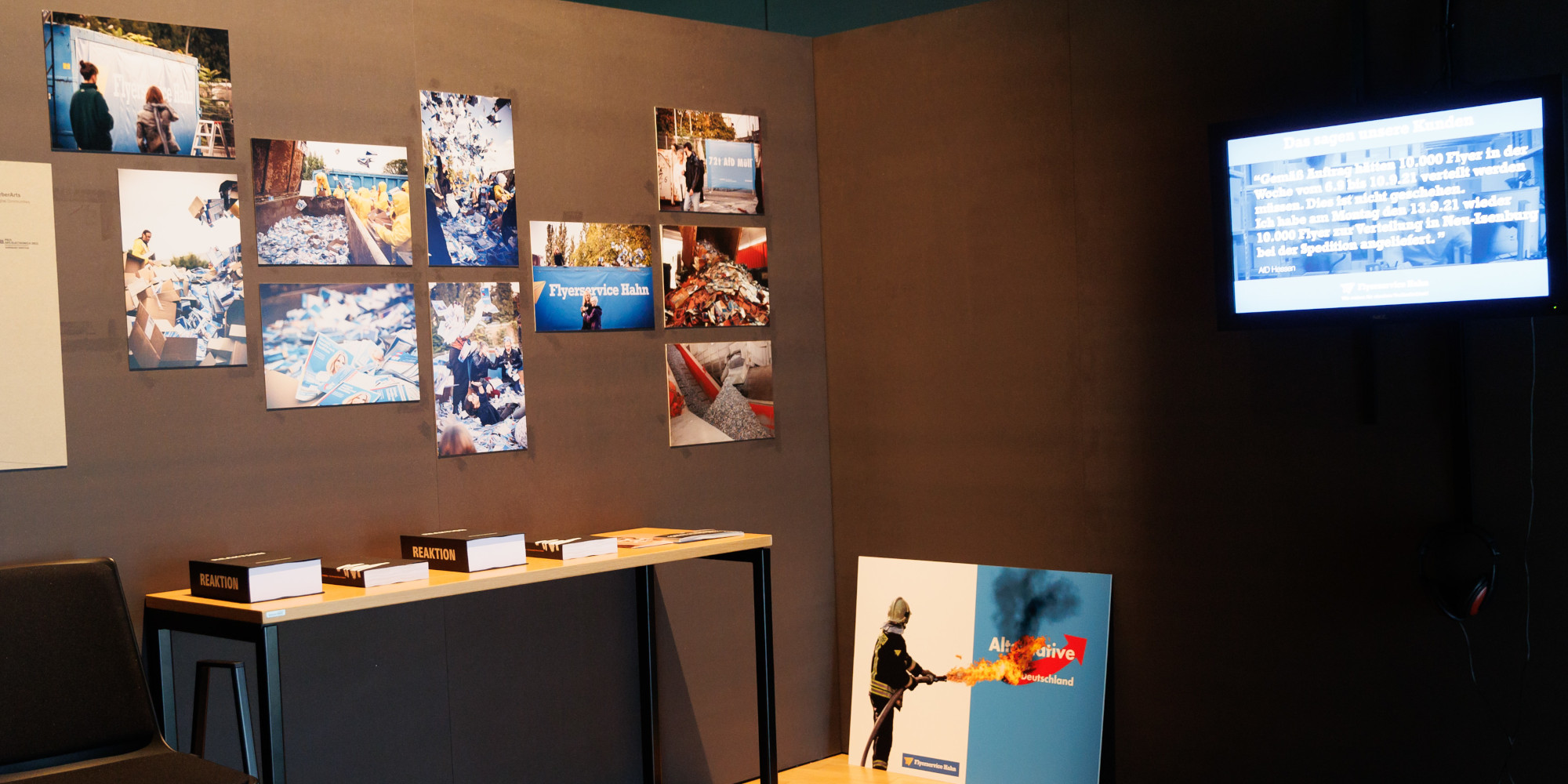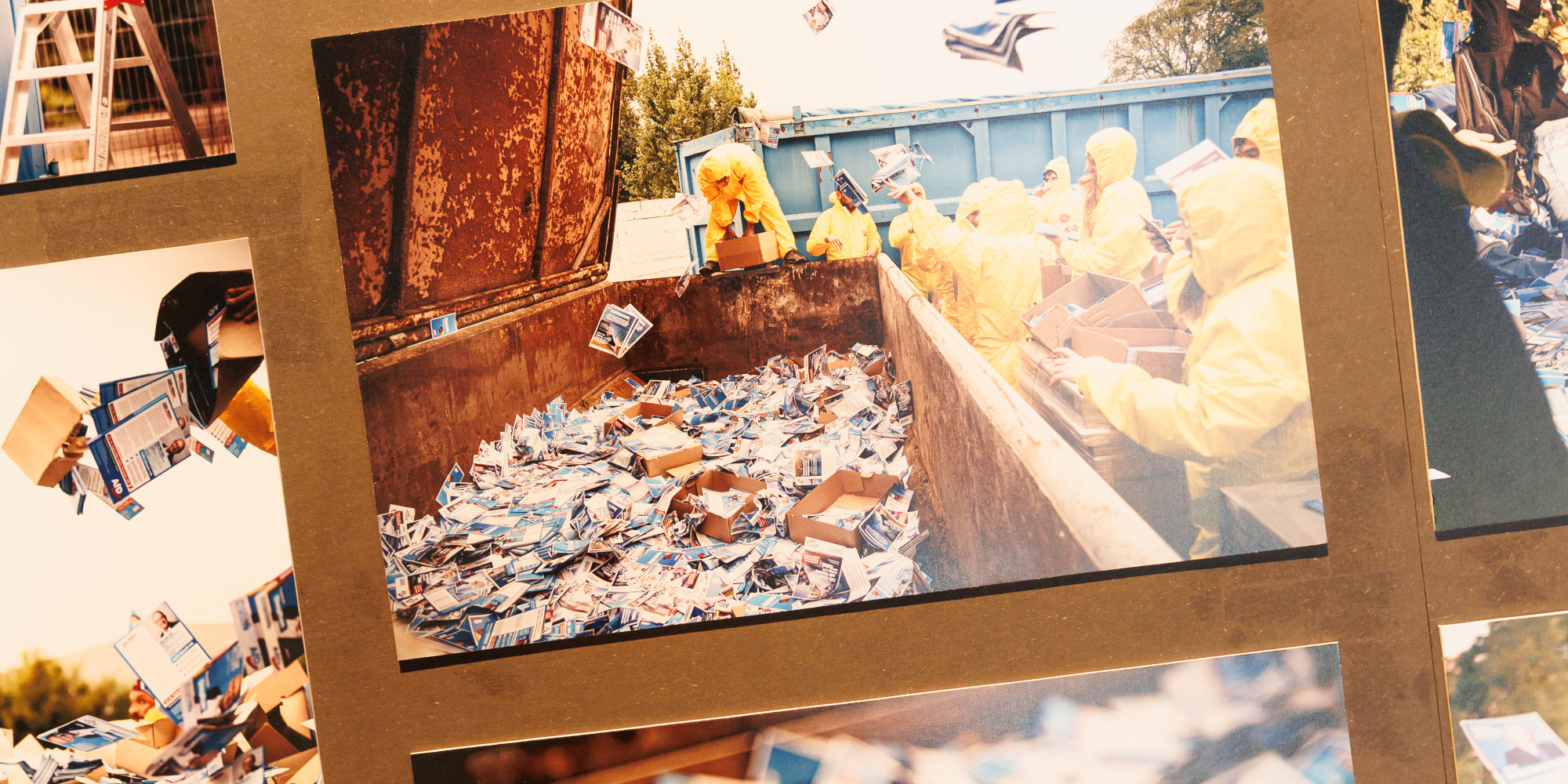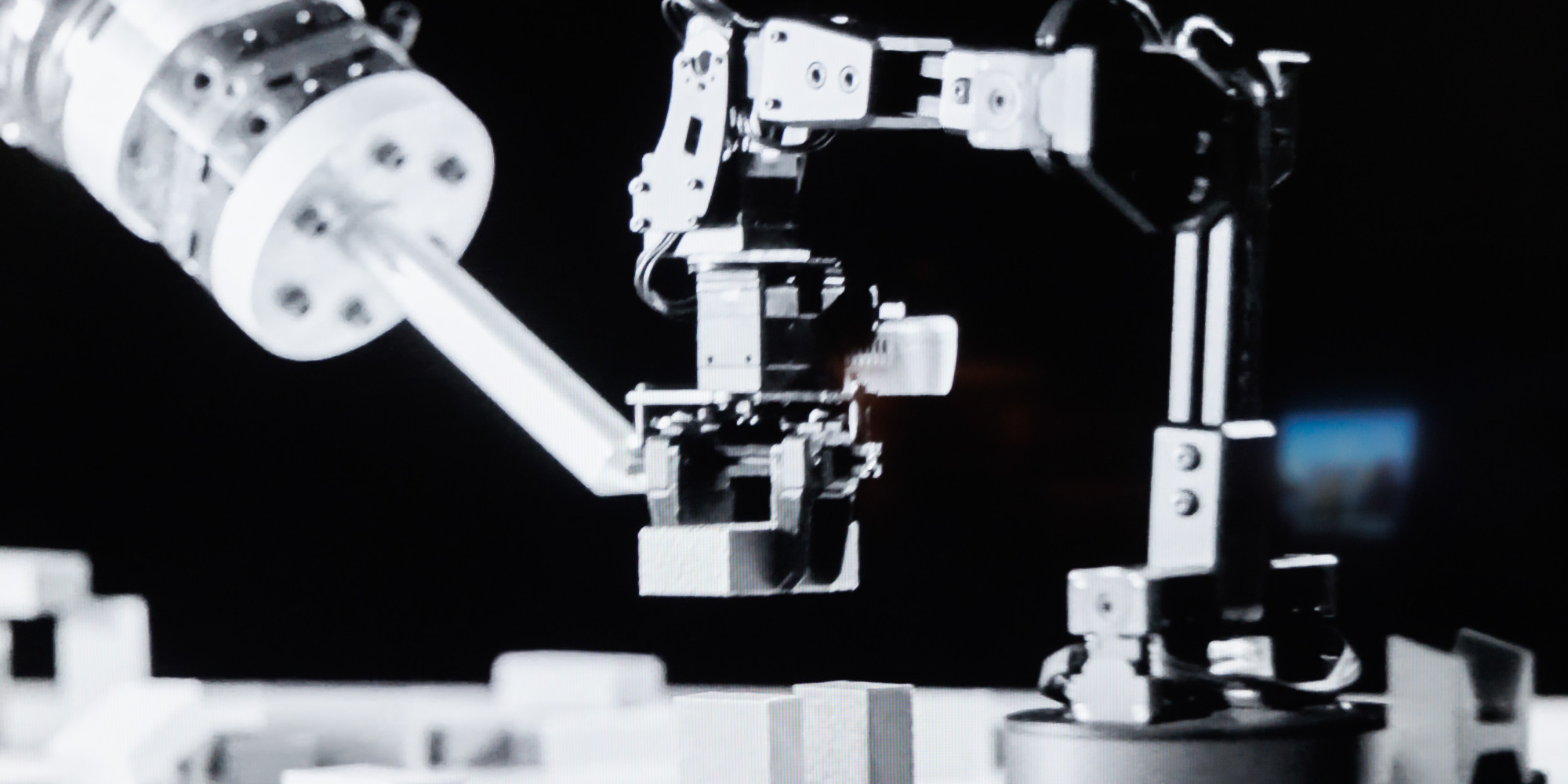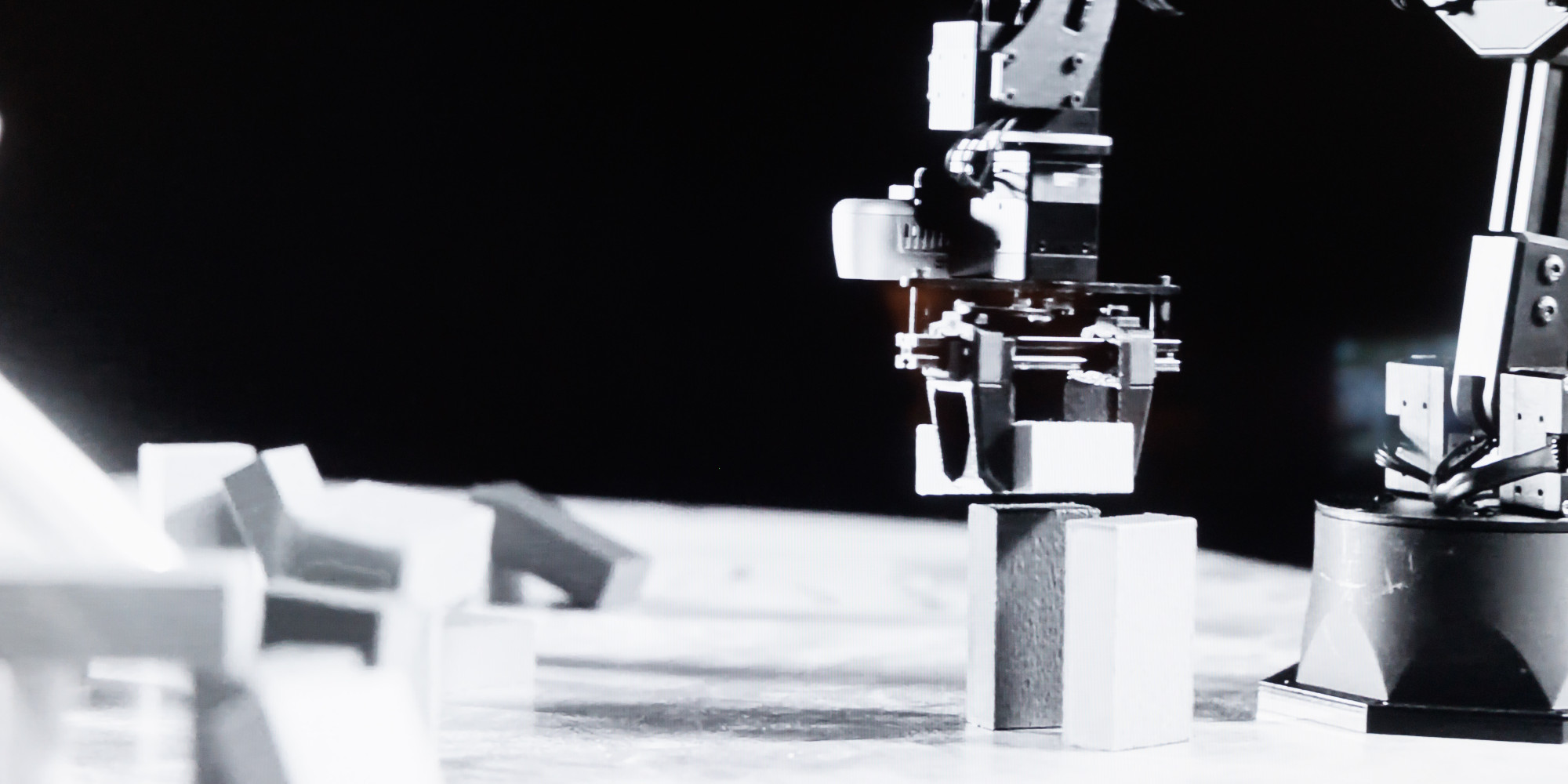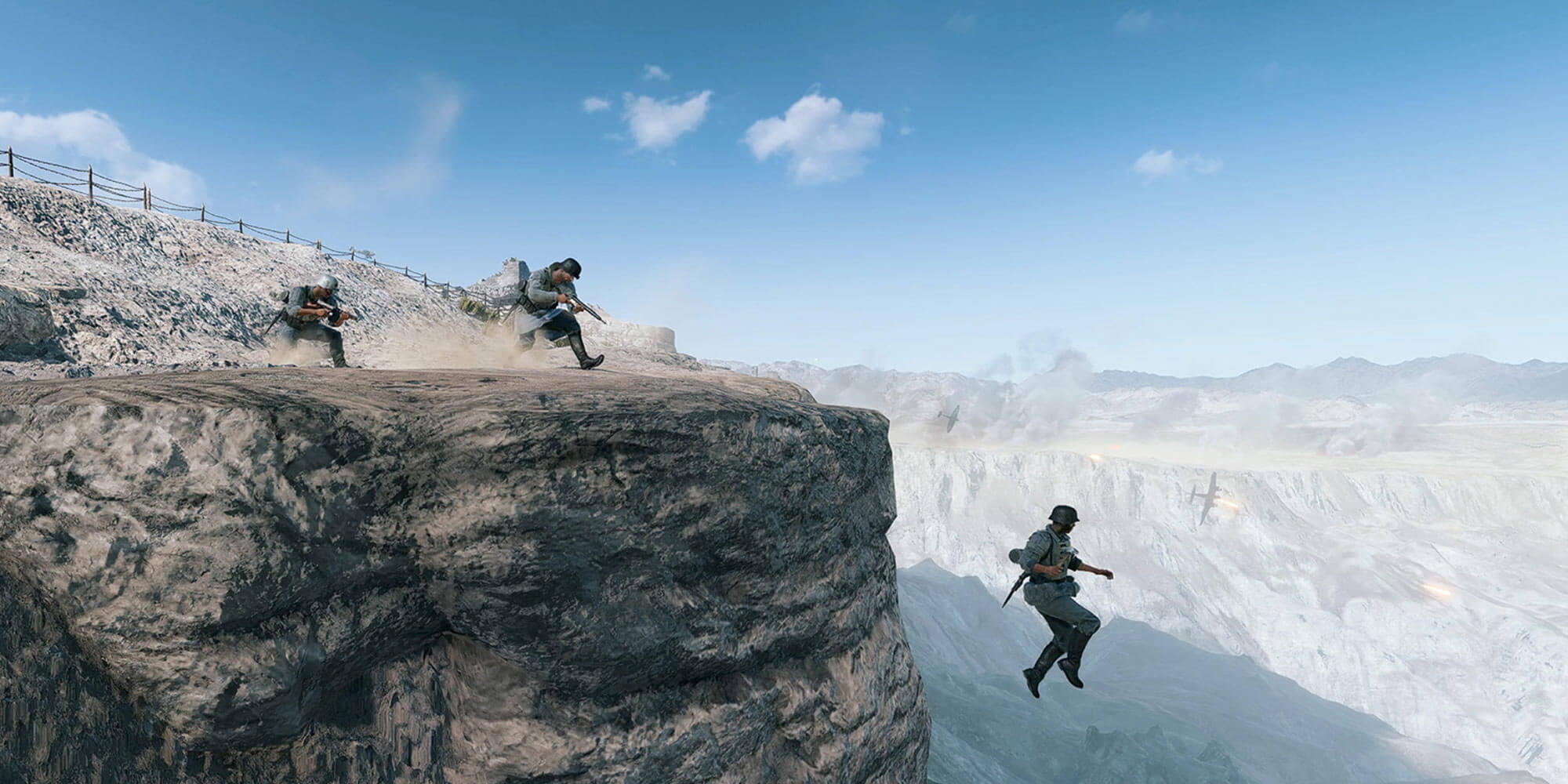Golden Nica
DAWN Avatar Robot Cafe ver.β
Ory Yoshifuji / Ory Lab (JP)
In addition to developing the avatar robots OriHime and OriHime-D, which users regardless of age, gender, or disability can remotely operate as their avatar, Ory Laboratory has envisioned the DAWN Avatar Robot Café concept, where users work or virtually visit via robots. Through the company’s Avatar Guild remote staffing agency, users can seek employment, which provides a way for people to remain active in society. The goal is to demonstrate that with the right tools, even people who have difficulties in moving about freely can participate in physical labor and customer service from the comfort of their homes via an avatar robot.
The development of avatar robots is the foundation for this groundbreaking project, removing the barrier between job seekers and employers. It provides a place for job-hunting and training for those with disabilities, and successfully led to permanent placements at conventional companies. Visiting reveals how the café is designed to provide customer service with a human touch, via robots. The robots serve as a medium for lively interaction between those with and without disabilities, and thus far we have seen how invaluable this is.
For those who hesitate to venture outside due to physical/psychological challenges, past accidents or the like, the avatar robot OriHime provides another means for physical expression and action.
OriHime is controlled remotely by “pilots” who interact with the world outside through robot-mounted cameras, speakers, and microphone. In this way, the robots offer virtual outings even for paralyzed pilots, by using a line-of-sight input device to speak with others.
Jurystatement
Technology in its original thought has an enabling function. Robots as avatars to grant a barrier-free access to society, as well as the concept of a futuristic-looking café, combines the best of the analog and digital worlds to redefine inclusion and how people can live and interact together. What makes the Avatar Robot Café DAWN ver.ß outstanding is how it stimulates us to think in novel ways how socio-technological arrangements can enable (marginalized) people to participate in communities. Particularly in times where people are seduced into commercialized and unsustainable virtual worlds, we should think about other forms of resilient community-enabling arrangements. Behind the coffee house itself is an economic concept that is sustainably conceived and future-oriented. Both in terms of the self-evident integration of vulnerable groups into society, as well as the design, the culinary arts, and the interaction between (wo)man and machine, the Avatar Robot Café DAWN ver.ß is an outstanding project and from the jury’s point of view a prime example of what a digital community can do and achieve.
Credits
Ory Lab Inc. https://orylab.com/en/#about
OYAMATSU Design Studio https://oyamatsu.co.jp/en/index.html
TASUKI Inc.
Sponsored by: NTT Corporation, https://group.ntt/en/corporate/overview; Biogen Japan Ltd. https://www.biogen.co.jp; Mitsui Fudosan Co., Ltd., https://www.mitsuifudosan.co.jp/english/corporate/about_us/outline; charity by crowdfunding ”CAMPFIRE” by 2156ppl ¥44,587,000, https://camp-fire.jp/projects/view/405051
https://dawn2021.orylab.com/en/
https://orylab.com/en/
https://youtu.be/vj1z6HEAkYY
Award of Distinction
Families For Freedom
Amina Khoulani (SY)
We are a women-led movement of families that demands that all arbitrarily detained and forcibly displaced Syrians are freed. We are 250 members across chapters in Syria, the UK, Germany, Turkey, and Lebanon. We have met senior policymakers in the UN and leading donor governments to advocate for justice. We run public digital campaigns demanding freedom for all of the country’s sons and daughters. Our position is against enforced disappearance and arbitrary detention by the Syrian regime and all parties to the conflict. We want to mobilize the public to pressure all sides to comply with our demands.
Our Demands:
We, as families, demand the immediate release of our relatives who have been unlawfully detained. And until then, we call on the Syrian regime and all warring sides, and all those who may influence them:
- To immediately release a list of names of all detainees, along with their current locations and statuses, and to immediately stop torture and mistreatment. In the case of death of a detainee, a death certificate along with a report on causes of death and burial location must be presented to the families.
- Pressure the Syrian government to allow international humanitarian organizations to immediately deliver food and medical aid, and to grant international rights groups access to detention facilities to closely monitor living conditions in order to guarantee civil detention facilities to meet healthy living standards.
- Abolish exceptional courts, especially field, war, and counter-terrorism courts and guarantee fair trials under the supervision of the United Nations
- Hold to account all those responsible from all sides, and particularly the Syrian government, for the violations they have committed and continue to commit against the arbitrarily detained and their families as an essential step toward justice.
Jurystatement
Families for Freedom is a community of Syrian families demanding freedom for all of the country’s sons and daughters, the hundreds of thousands of Syrians detained or disappeared, the majority of whom are in Syrian regime prisons but also other parties to the decade long war. The jury is particularly inspired by the heart and soul of this campaign, the drive of this women-led movement, mostly mothers led to free their loved ones. They have really well articulated demands and use exemplary ways of advocacy and pressure to communicate with various sides, in Europe and beyond, who could do more to put an end to these miserable cycles of human suffering. Their collective action, shared purpose, and unified voice provides ample hope to similar communities in distress. They organize across several countries between UK, France, Germany, Syria and Lebanon and keep pushing for hope where there is so little to cling to. They deserve our respect, support, and admiration.
Credits
Award of Distinction
Strong Hair
Yatreda (ET)
Strong Hair ጠንካራ ፀጉር is a collection of 100 looping portraits that merge the diversity and power of African hair with the blockchain.
A diverse range of ethnic groups from all over Ethiopia were featured, representing the country’s cultural mosaic of over 80 different ethno-linguistic groups. In Ethiopia, you can often identify somebody’s nation or tribe just by looking at them and hair can be both a social signal and a status symbol. Many local African hairstyles are disappearing. When humanity loses a hairstyle, it loses a visual language that may never be repeated again. Thousands of years of culture has created these looks.
Each hairstyle was captured using a homemade metal platform with a 360 degree spinning camera arm. The rig was made completely with accessible materials in order to inspire the local community that anything can be done by hand. The circling videos were then looped, so that playback can be continuous without a discernible beginning or end.
The collection was “minted“ as non-fungible tokens (NFTs) on the Ethereum blockchain, with the video files stored permanently across a distributed network of computers. This preserved the precious cultural vessels on a fully decentralized blockchain. Art collectors from around the world participated in the NFT auctions, including from the Ethiopian diaspora, collecting the Strong Hair pieces into their decentralized crypto wallets. Using a custom smart contract, 10% of the crypto earnings were automatically distributed into a separate wallet, the “Yatreda Ekub,” which is used to help other African artists pay the fees to mint their first artworks, and to collect meaningful works of art from others around the world.
Jurystatement
Hair can be wavy, curly, straight, thick and plentiful, or short, thin and patchy.
It is a fundamental component of both personal and political selves and can be a social signal and a status symbol. In Ethiopia, hairstyles are sculptures full of meaning. With their hair people are able to identify their ancestry and distinguishing traits based on their culture, nation, or tribe. When we lose a hairstyle, we lose a visual language, an expression that has been created in over thousands of years that may never be repeated again. The project Strong Hair wants to save that culture of hair styles from getting lost, which is so important for the local communities. It wants not only to preserve what remains by creating a portrait exhibition to encourage women of color to embrace their crown of hair but also to bring back these styles. Not just for Ethiopia, not just for Africa, but for the world. The project shows how with the use of NFTs, blockchain technology can potentially help to preserve cultural heritage and identity while empowering local communities. These cultural hairstyles can be celebrated and preserved and can be shown to the world as a resource and an asset that is useful for Ethiopia and any other place.
Credits
Photographer, director, cinematographer: Kiya Tadele
Logistics and production: Nibret Adem
Research: Roman and Suzy Tadele
Technical assistant: Nebiyu Bekele
Post-production: Kiya Tadele and Joey Lawrence
https://foundation.app/collection/strong
STRONG HAIR Motion Portrait Gallery: https://foundation.app/collection/strong
Behind the scenes (Twitter): https://twitter.com/yatreda/status/1491924112465444864
Behind the scenes (YouTube): https://www.youtube.com/watch?v=12Km5-ZSjBA
Honorary Mention
Atomfa (and other stories)
Joanna Wright (GB)
Atomfa (and other stories) is a long-term, ongoing, iterative, interactive, and landscape based documentary that frames images, memory, and questions from the final days of a rural nuclear power station. From local mythologies and the promise of the atomic age to the space age. From the past, the present, and long into the future. Atomic power came to the mountains of rural north Wales over sixty years ago. Now the people of Trawsfynydd are dismantling the nuclear power station built and run by parents and grandparents, a job that won’t be completed in our lifetime. With unique access to archive material from the power station itself, the project is built on a co-creative process, in collaboration with the diverse communities that live around and work within the power station, to create new and future archives for the site.
Jurystatement
The word “development” evokes fast growth and infinity, and speaks of hope for a better future. But what happens when the future upon us has transformed this beacon of hope into a ruin that must be relegated to the past? How do you describe the legacy of development to those who inherit a future that is to be dismantled? Joanna M Wright’s Atomfa alludes to these complex questions through a many media project documenting the closure of Trawsfynydd Nuclear Power Station in Wales, in collaboration with past and present workers at the site. In creating a collaborative archive replete with video, oral narratives, and text, it invites the community that supported the development of the nuclear reactor then and its decommissioning now to lead the narrative of this transition. More critically, it also holds space for the complex and frighteningly fragile questions we must ask of ourselves about the futures we are building. The archive serves both as a resource, and a tentative but much needed dialogue around these questions.
Credits
Collaborators & thanks to: Ysgol Bro Hedd Wyn, Naomi Jones, Trawsfynydd Site Stakeholders Group, Gwynedd Archives: Meirionnydd Record Office, Alex Ashcroft, Ed Edwards, Margaret Matheson, Isgoed Williams, Rory Trappe and all present and former staff and neighbours of Trawsfynydd power station who have contributed stories, images, ideas, and support.
With support from: CyMAL: Museums Archives and Libraries Wales, Parc Cenedlaethol Eryri, Ffilm Cymru Wales / BFI Horizons Fund, Arts Council Wales, iFLAB, MIT Open Documentary Lab & Co-Creation Studio, British Council Film, Arts Territory Exchange.
www.atomfa.com
http://joannamwright.com/home/index.php/portfolio-item/atomfa-and-other-stories
Honorary Mention
Flyerservice Hahn
Center for Political Beauty (DE)
The Center for Political Beauty embodies a radical form of humanism. It is an assault troop that establishes moral beauty, political poetry, and human magnanimity. The Center fuses the power of fantasy with the power of history. Our fundamental conviction is that the legacy of the Holocaust is rendered void by political apathy, the rejection of refugees, and cowardice. We believe that Germany should not only learn from its history but also take action. We shape political resistance in the 21st century, arming reality with moral fantasy and the power of history. Resistance is an art that needs to hurt, irritate, and unsettle. We experiment with the laws of reality and fill the space previously occupied by public intellectuals: the moral conscience.
In the German Superwahljahr [Super Election Year] 2021, the Center for Political Beauty founded the Flyerservice Hahn: the best flyer service in Europe! Unbelievable, but true: A non-existing company with no real business address, no commercial register entry, and no tax number made the AfD an offer it just couldn’t refuse. A fictive company acquired orders worth millions. Why should a real super political party and real “Alternative” for Germany distribute flyers by hand, like all the idiots from the old-fashioned parties? The result: 85 lazy local, district, and state groups of the AfD supplied the nationwide logistics center of the new global leader of non-distribution. In the end our storage unit contained 5 million flyers. 72 tons of AfD garbage. Welcome to the Flyerservice Hahn!
The public was able to visit the AfD recycling center in the center of Berlin. Thousands of investors were happy to support a flyer service whose highest priority was the dissatisfaction of its best (and only) customer. The shareholders of the company were invited to take a unique bath in fresh Nazi propaganda, which was saved from polluting the election campaign with their help. They could experience firsthand what otherwise would have found its way into their letter boxes. In the end the garbage was taken, where it belongs—to a shredding facility. It was finally transformed into toilet paper.
Jurystatement
The jury honors the Center for Political Beauty for their work which is a fresh, original interpretation of the relationship between fiction, reality, and history in political activism. The group is well known for their controversial actions as well as their modus operandi. Their powerful statements are carefully planned and well thought through. With their interventions they show again and again how forceful one can and should be when it turns to humanism. The Center plays an important role in the political sphere of the contemporary world to sensitize the general public to the dangerous changes occurring right across Europe.
Credits
https://politicalbeauty.de
https://politicalbeauty.de/flyerservice-hahn.html
Honorary Mention
Sisyphus
Kachi Chan (HK)
Sisyphus is an art installation featuring two robots engaged in endless cyclic interaction. Smaller robots build brick arches, whilst a giant robot pushes them down. This robotic system propels a narrative of construction and deconstruction.
Named after a figure in Greek mythology, who is condemned to push a boulder up a hill every day only to watch it roll back down afterwards. Sisyphus is a commentary on the current socio-political climate, where systems of authority and resistance continuously clash against each other. Repetition is explored in this piece through the interaction of two contrasting robotic systems—one small and nimble, the other powerful and oppressive—the Greek Sisyphus representing either or both of them.
Despite the discrepancy that exists between the size of the two robots, their struggle is endless. The giant robot does not make any concessions and continues to crush the brick arches. Even once destroyed, however, the small robots proceed to building new brick arches, thereby manifesting a collective resistance through individual autonomous actions. Here, the status quo is continuously challenged by small, dispersed acts that disrupt the absolute power of the giant robot. The persistence of the small robots and their ability to propagate small-scale, new forms of resistance make all efforts worthwhile, as opposed to “futile.” Hence, Sisyphus symbolizes not only the confrontation between power and resistance, but also the hope that comes with the possibility of change.
Jurystatement
The imagery of a social structure—be it a community, society, or institution—makes us think that it cannot be destroyed once we build it. But a religion without people practicing the culture, a democracy without people going to elections, or a community without participation means that structures perish. Therefore, we cannot take any social or societal achievement for granted. Social life is a recurring process of creation and destruction. This installation speaks to this very fundamental idea. Moreover, it highlights the unruly role of powerful forces seeking to destroy institutions dear to us. But the piece also contains a hopeful message: Even if the foe is powerful, we should not give up. Instead, the people persistently maintaining, re-creating, and re-building what they hold dear can persevere.
Credits
Director, roboticist: Kachi Chan
Research: Pat Wingshan Wong
Creative technologist: Nirav Beni
Project advisors: Ruairi Glynn, Parker Heyl, Phaedra Shanbaum
Project developed at: Interactive Architecture Lab, University College London
Special thanks to: Arthur Wilson, Claudia Palcova, Johann Spindler, Maayan Sophia Weisstub
https://www.kachi-chan.com/projects/sisyphus
Honorary Mention
Total Refusal
pseudo-marxist media guerilla (AT)
Computerspiele sind gleichzeitig Aushängeschild der kapitalistischen Unterhaltungsindustrie und vernachlässigtes Massenmedium unserer Zeit. Das Künstlerkollektiv Total Refusal erkundet dieses sich ständig erweiternde Feld mittels künstlerischer Interventionen. Die Rolle der Kunst als politisches Medium, das Medien-Upcycling sowie der Hyperrealismus in Computerspielen bilden dabei wichtige Impulse.
Total Refusal wurde 2018 von Robin Klengel, Leonhard Müllner und Michael Stumpf gegründet und 2020 durch Susanna Flock, Adrian Jonas Haim und Jona Kleinlein ergänzt. Gestartet als „Digitale Abrüstungsbewegung“, definiert sich die Gruppe heute als „pseudo-marxistische Medienguerilla“. Das offene Kollektiv kritisiert bestehende Praktiken im Genre der Videospiele und eröffnet mit Werkzeugen der Aneignung und Wiederverwendung von Spielressourcen eine neue Perspektive: „Angesichts der Tatsache, dass dieses Medium sein kulturelles Potenzial derzeit nicht ausschöpft, wollen wir uns digitale Spielräume aneignen und sie einer neuen Nutzung zuführen. Indem wir innerhalb von Spielen agieren, aber das beabsichtigte Gameplay beiseitelassen, widmen wir diese Ressourcen neuen Aktivitäten und Erzählungen und versuchen, ‚öffentliche‘ Räume mit kritischem Potenzial zu schaffen.”
Jurystatement
Total Refusal – pseudo-marxistische Medienguerilla beleuchtet das Unsichtbare und stellt das Akzeptierte der Alltagsgesellschaft, wie sie in Blockbuster-Spielen dargestellt wird, in Frage. Total Refusal ignoriert das eigentliche Gameplay und die allgemeine Erzählung, der die Spieler*innen folgen, um die vorgegebenen Ziele erreichen zu können. Es analysiert die offenen Welten, in denen die Spiele stattfinden, und nimmt die Zuschauer*innen mit auf eine Tour im Dokumentarstil, die durch die Seitenstraßen dystopischer Städte führt und bei der man einen Blick auf die Architektur wirft oder die Aufgaben der NPCs („non-playable characters“) analysiert. Diese „nicht spielbaren Charaktere“ sind ein wichtiger Bestandteil des Gameplays, da sie den virtuellen Welten Leben einhauchen und das Spielerlebnis intensivieren. Da NPCs alltägliche Aufgaben erfüllen, kann das virtuelle Eintauchen in ihren Tagesablauf, ihre Jobs und vorprogrammierten Aufgaben auch als ein Spiegelbild davon gesehen werden, wie soziale Strukturen, Vorurteile oder der Wert menschlicher Arbeit heutzutage wahrgenommen, wie Gesellschaften gesehen und in Spielen dargestellt werden. Da einerseits die Spielkultur im Alltag und andererseits die Kultur in den Spielen zu finden ist, ermöglicht die Interaktion nicht nur eine Reflexion über die in den Spielen vermittelten Werte, sondern lässt sie uns auch als Handhabe verstehen, um eine andere Perspektive auf bestehende gesellschaftliche Normen und deren Bedeutung zu gewinnen. Die Jury schätzt auch die Tatsache, dass Total Refusal sich auf das große Genre der Spiele konzentriert, das in breiteren Diskussionen oft nicht hinterfragt wird, um Visionen sowie soziale Strukturen und die Rolle einer Gesellschaft, die in Spielen und Gameplay dargestellt wird, zu untersuchen und zu hinterfragen.
Credits
Total Refusal & ZKM Karlsruhe
https://totalrefusal.com
GALLERY
Honorary Mention
Red Redemption
Total Refusal: Adrian Haim (AT), Leonhard Müllner (AT), Robin Klengel (AT) in cooperation with Susanna Flock (AT) and Jona Kleinlein (DE)
A Crash Course in Class Analysis through St. Denis: The city of Saint Denis is located in the southern USA and is a pastiche of New Orleans at the turn of the 20th century. It is the capital city in the video game Red Dead Redemption 2. Women and men toil in factories, sit in the mud in front of their shacks at night, while the bourgeois leisure class reads newspapers or poetry in well-tended gardens on the other side of the map. In between, the middle class strolls along the boulevard and visits the theater. Hundreds of NPCs (Non-Playable Characters), the extras of this setting, meticulously stage the same class relations that shape the cityscapes of digital and physical capitalist realities alike. Within a pseudo-Marxist city tour, Total Refusal analyzes profit and surplus value, capital and accumulation in the mass medium of a video game.
Credits
A project by: Adrian Jonas Haim, Leonhard Müllner, Robin Klengel in cooperation with Susanna Flock & Jona Kleinlein / Modding: RCPisAwesome
GALLERY
Honorary Mention
Hardly Working
Total Refusal: Robin Klengel (AT), Leonhard Müllner (AT), Susanna Flock (AT), Michael Stumpf (AT)
NPCs are non-playable characters that populate hyper real worlds to create the appearance of normality. Usually these digital extras play no major role in the story of the game. Here a laundress, a stableman, a street sweeper, and a handyman are the four main characters of this film. With ethnographic precision, the film observes their daily work: a rhythm composed of loops that makes them work daily and tirelessly.
They are digital Sisyphus machines that have no perspective of breaking out of their activity loops. In the moments when the algorithm of their existence shows inconsistencies, the NPCs break out of the logic of total normality, display their own faultiness, and appear touchingly human. Hardly Working gives priority to characters that normally fade into the background of video games: NPCs.
Credits
Concept: Robin Klengel, Leonhard Müllner, Susanna Flock, Michael Stumpf
Narration: Jacob Banigan
Sound Design: Bernhard Zorzi
Stage Design: Rockstar Games
GALLERY
Honorary Mention
Featherfall
Total Refusal: Robin Klengel (AT), Leonhard Müllner (AT)
The video installation “Featherfall” is based on research in online forums in which video players exchange their dream experiences. It becomes clear how close dream and game worlds can come to each other in the psyche of the users and what feedback can develop between the two alternative realities. “Featherfall” ties in with the archetypal nightmare of “falling down”, which often occurs during puberty. Falling without ever landing” exists in video games in the form of a recurring programming error – a glitch – through which the avatar falls beneath the surface into the empty, non-programmed space. The glitch as a digital nightmare.
Credits
Concept: Robin Klengel and Leonhard Müllner
Text: Robin Klengel
Editing: Leonhard Müllner
Construction: Johannes Schweighofer
Narration: Kate Howlett-Jones, Michael Howlett
